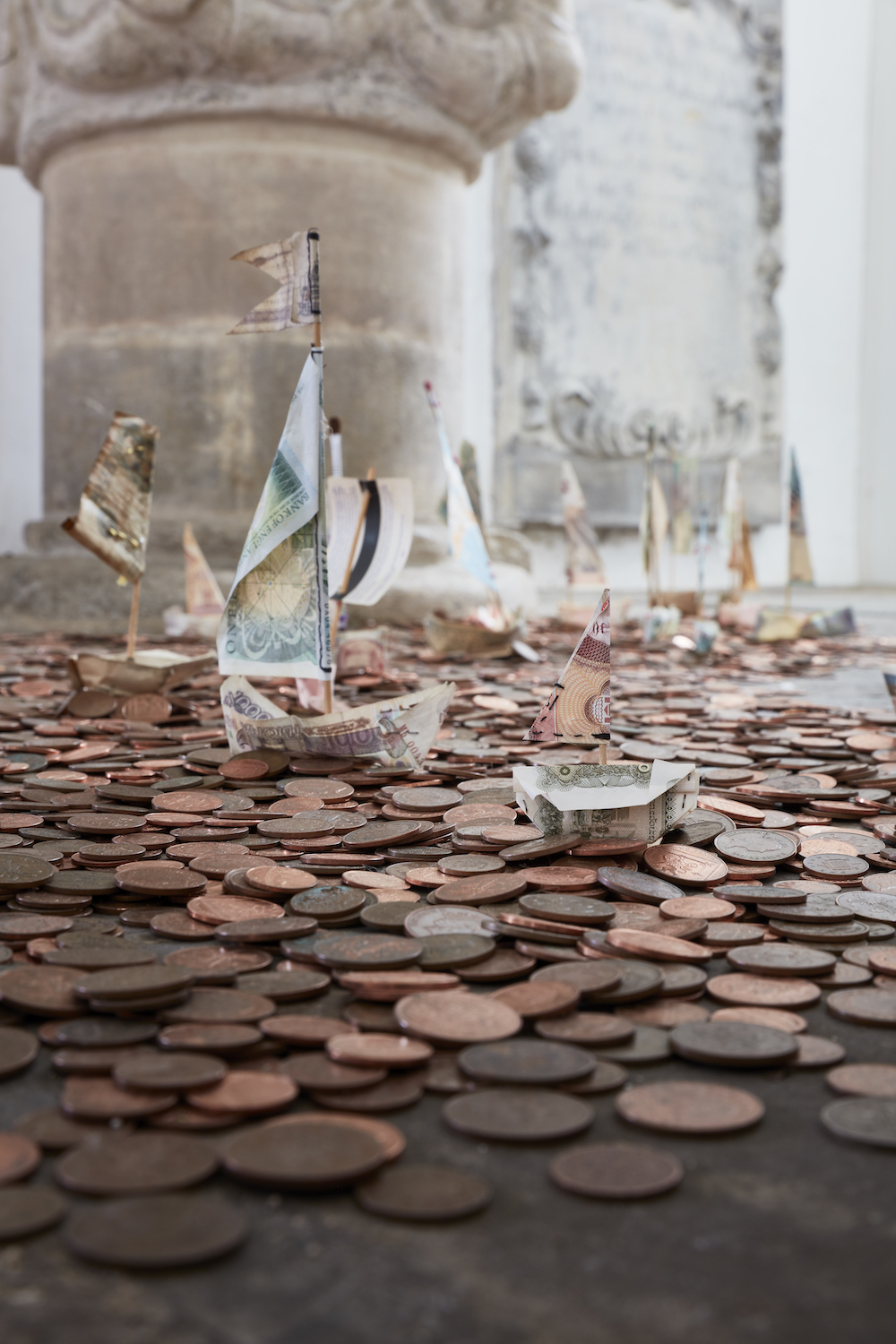
’s multi-media work explores the connected topics of international trade, migration and climate change with a sharp awareness of their origins in the Industrial Revolution and the history of colonialism. This year she has shown large installations of boats with sails made of paper money on a sea of copper coins (Trade Winds at St Peter’s Church, Cambridge) and hundreds of metres of cloth feeding through sewing machines to make clothes (Rumpelstiltskin at Aspex, Portsmouth). Stockwell teaches part-time at the University of East London and is currently artist in residence at the city law firm, Pinsent Masons. I met the artist at her West Norwood studio, where she gathers and transforms the many common yet socioeconomically-charged materials she uses.
“I like the stains on everything that’s used—the residue, the left-behind”
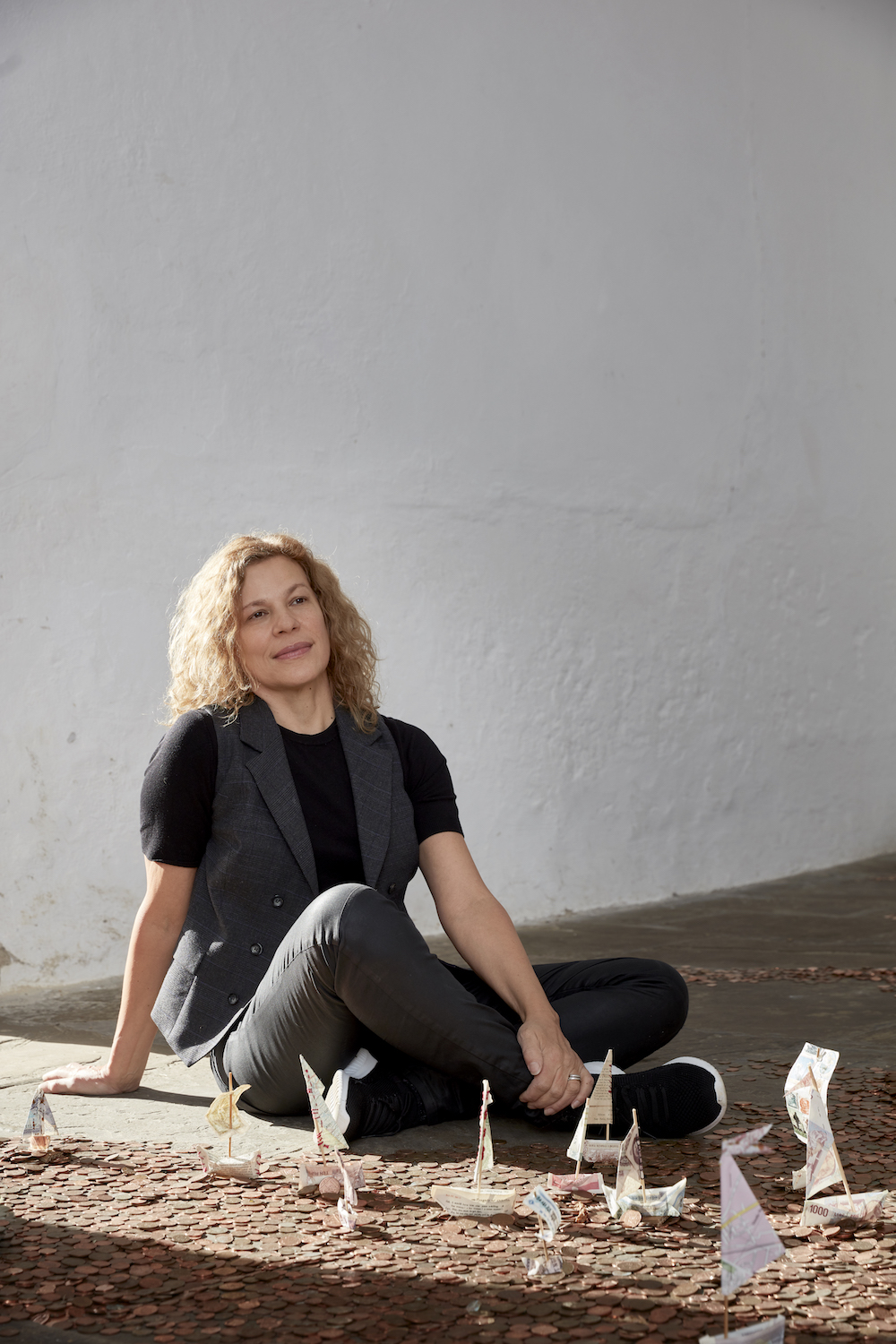
You trained as sculptor?
Yes, at the Royal College of Art in the nineties. But I don’t really make sculptures now—taking that to mean single objects—so much as drawings, collages, films and mixed-media installations which collect together many objects. I’m particularly interested in using materials that have an inherent political content and history, everyday things we either don’t think about, or else might throw away without consideration: money, maps, tea, coffee, rubber inner tubes, old computer components, even toilet paper. The materials often have an international presence, but at the same time we relate to them intimately, so there’s a private and public aspect. They also matter to how we live our lives in a post-industrial age. And they’re not new: I like the stains on everything that’s used—the residue, the left-behind.
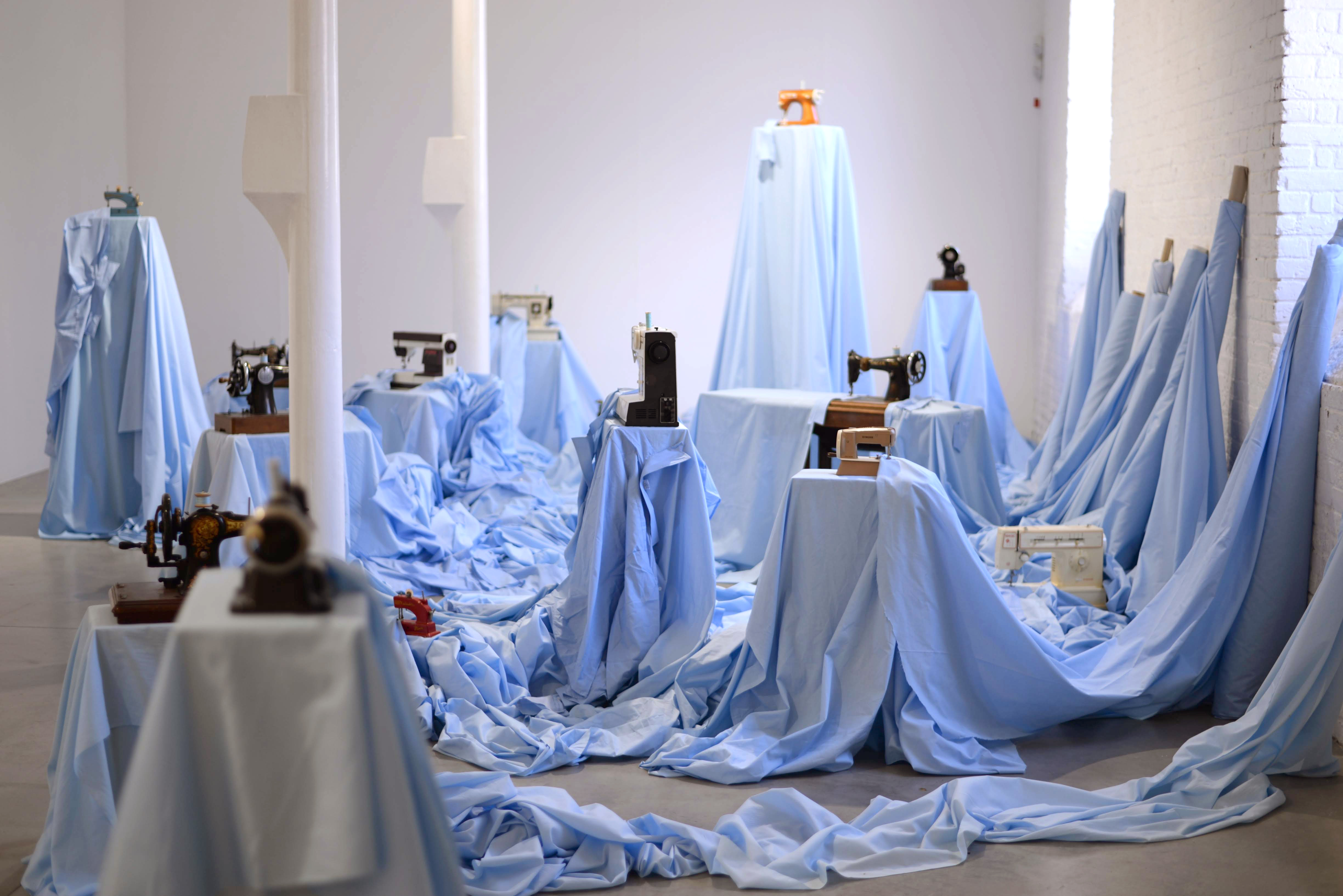
How do your works develop out of such materials?
I have ideas, and materials find me, then through manipulating them and reading about them, the ideas come to the surface, linking the materials to wider issues. Someone once called me “the material whisperer”. Perhaps my background played a part. I grew up in a sewing and knitting household—I could read a dressmaking pattern before I could read a book—and I like to work with what have been seen as traditional female crafts. Even more so once I left college and no longer had ready access to the more macho processes of welding and casting. There used to be a material hierarchy—it wasn’t that long ago that you would be looked down on for using a sewing machine for art, unless you smashed it up! And my mother was obsessed with recycling, well ahead of time. She’d wash plastic bags in order to reuse them.
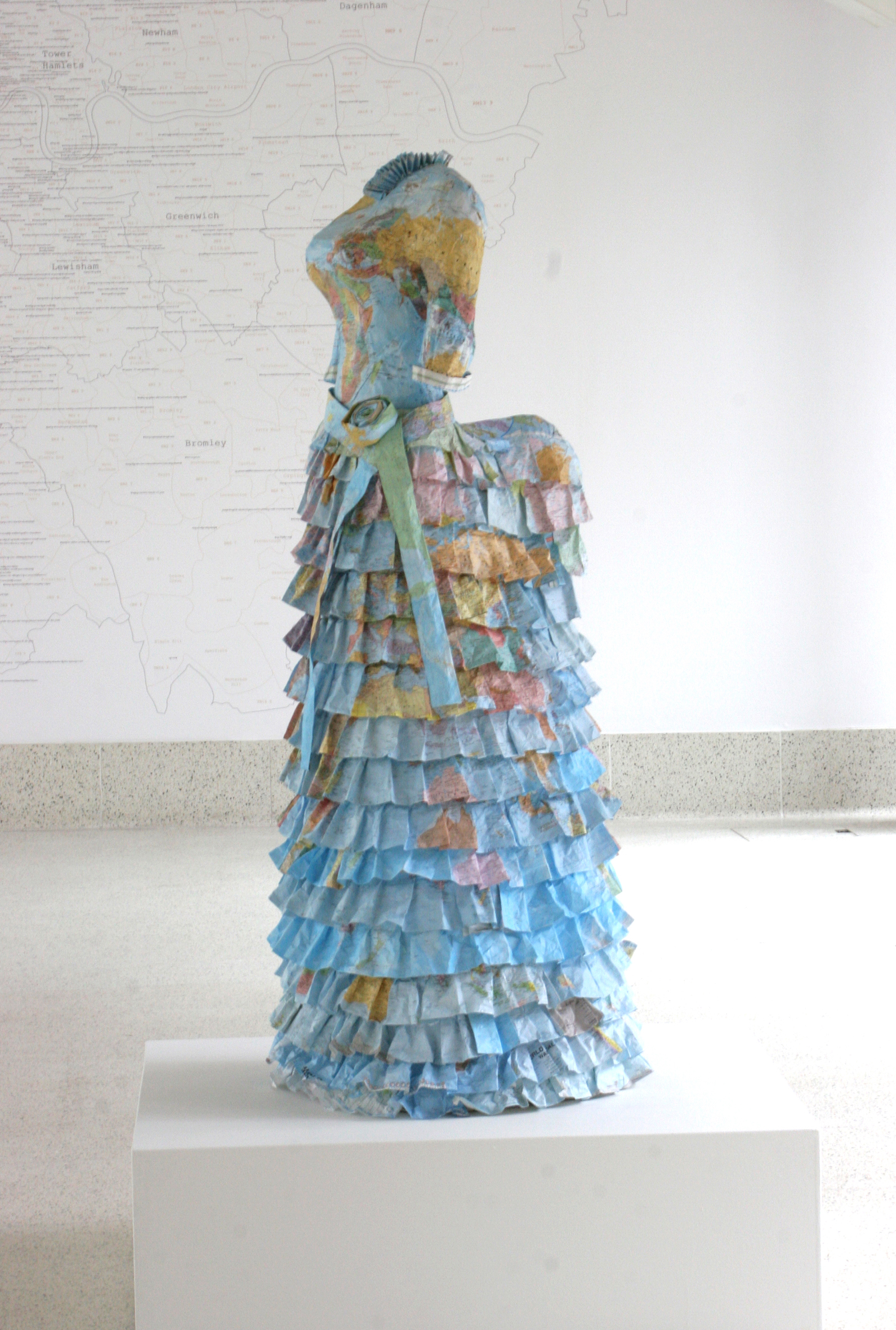
What are your themes?
I’m interested in the bigger issues of global politics—such as migration and trade and, of course, the consequences of Brexit. Again, my parents were in education, and were strong socialists. My materials often have fascinating histories: think of how the Industrial Revolution was largely funded by selling opium to China in return for tea which was sold on in turn. But I aim to raise issues, not put across a particular view. I do get fired up and shout at the TV when Boris comes on, but I hope my work can carry various different meanings.
“It wasn’t that long ago that you would be looked down on for using a sewing machine for art”
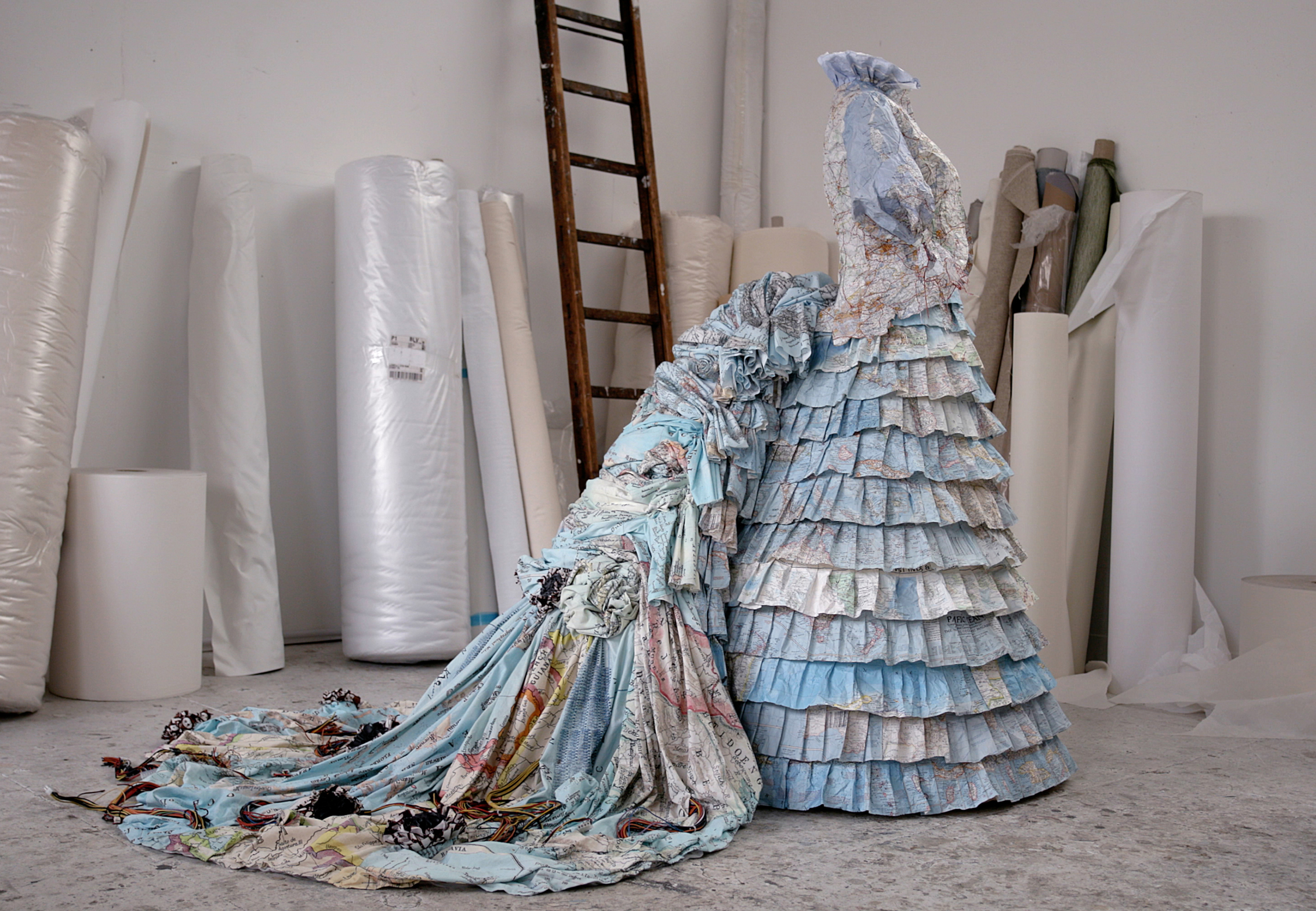
I love your map of the USA made from Chinese money, reflecting who holds the national debt, and you’ve often used maps, banknotes and coins. Why did you turn them into dresses?
I had lots of maps in the studio, and thought: if I make a dress out of these it will talk about women claiming their territory, and claiming the female body. And I’ve gone back to them over the years, including a money dress which alludes to economic independence. I call them dresses but they’re artworks really—you can’t wear them, they’re empty spaces to be filled with the untold stories of the women who might have worn them.

Can you describe Trade Winds?
It’s a sculptural installation in which a flotilla of paper money boats weaves across the sea of coins as if on a journey to elsewhere. There’s £1,000 of copper on the ground—carrying £40 of which just about killed me!—and the boat sails are made from banknotes I’ve collected over many years. So you might ask: Are the boats contained or free? Is there a border or a wall? Is the money enabling or restricting? And in Cambridge it was in a Norman church, connecting to the conquest of England.
What sort of responses does Trade Winds generate?
Though the mass of currency resembles a sea, the coins’ edges formed the suggestion of a continent, and everyone asks “Is that an ocean or a land of coins?” People got it that money was the driver leading to where we are today. Migrants who’ve seen it have been reminded of the corruption and inequality in the nations they have left, and of how they didn’t have any money when travelling on the sea, leaving them completely dependent on the traffickers to whom they’d probably paid their life savings.
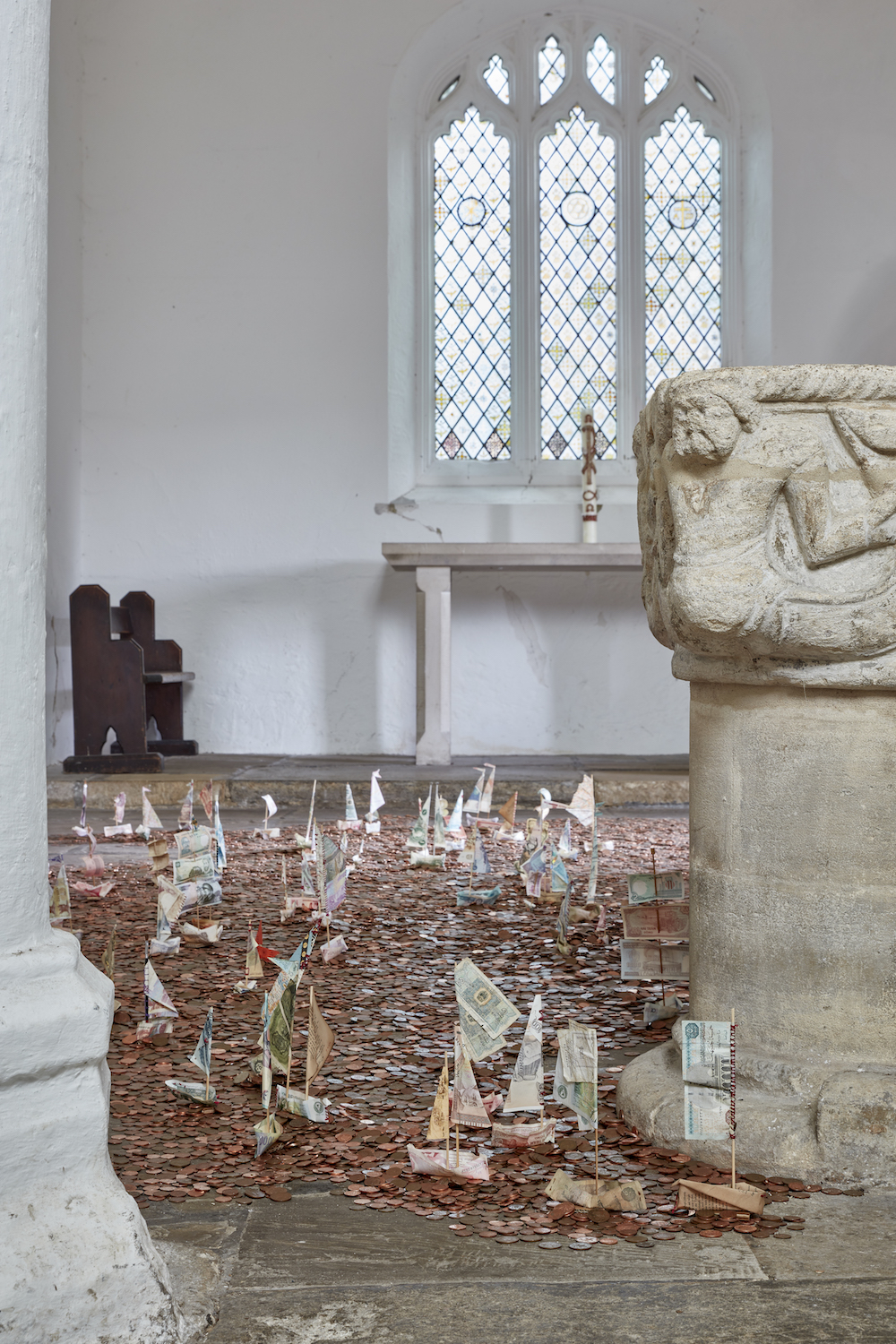
Are you linking colonial trade to migration?
Yes, definitely, and to ecology. That we’re burning the planet and displacing its people is very much connected to the way we’ve chosen to live for the last 250 years. The distribution of wealth and the tendency to act as colonizers—whether it was Britain a hundred years ago, the US now or maybe China in the future. Migration is a tip of the iceberg. Trade Winds was actually an official visual contribution to a conference which sought to open new conversations about the issues around migration. In his speech, Rowan Williams suggested that the widespread “fear of the migrant” isn’t just racist, but reflects an underlying fear of global warming: the migrant is the early warning manifestation of something about which we’re in denial. Of course migration will become a much bigger issue as climate change forces more people to move.
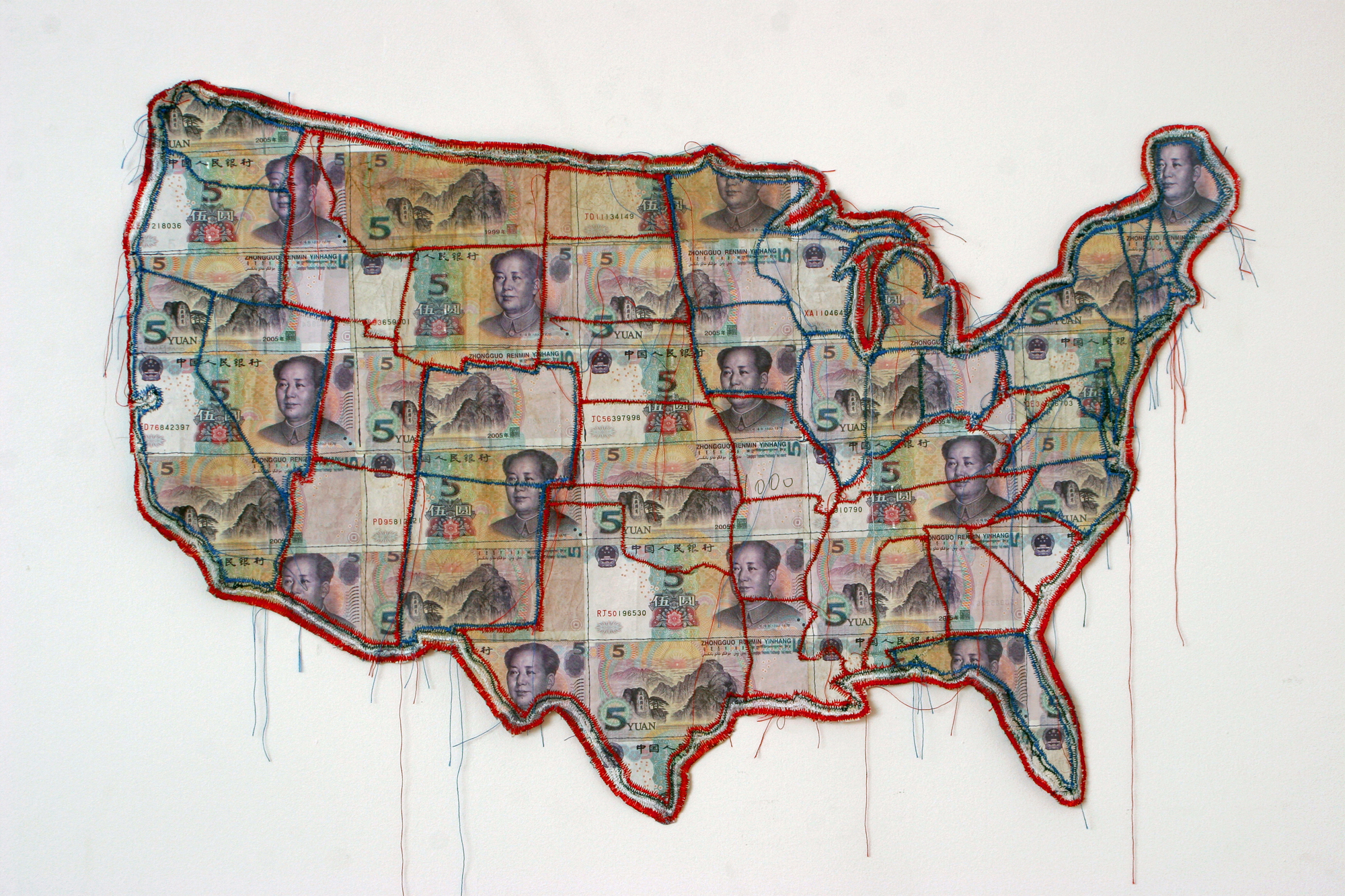
Were they your own sewing machines in Portsmouth?
Yes, I’ve been given and collected lots of historic examples. I’ve also sewn as a “social practice” by asking people in a charity for the homeless if they need anything mended, because it is hard to make repairs in those circumstances. I’d like to develop that further with people living on the street.
Why the title Rumpelstiltskin?
It refers to transformation, which I’ve always found enchanting. In the tale, the princess must spin straw into gold—to satisfy those who want wealth and power—and that echoes the harvest, the need to turn wheat into bread. Some of the machines are set up to operate intermittently on their own—visitors loved that—and it reminds me of how sometimes a sort of magic occurs when you’re making art and you wonder if the work could make itself.





